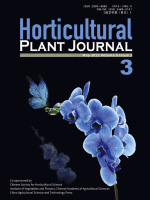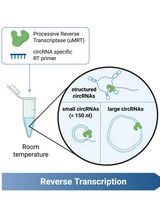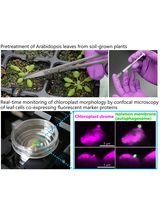- EN - English
- CN - 中文
An Optimized Protocol for Detecting Guard Cell–specific Gene Expression by in situ RT-PCR in Brassica rapa
通过原位 RT-PCR 检测白菜保卫细胞特异性基因表达的优化方案
(*contributed equally to this work) 发布: 2023年09月05日第13卷第17期 DOI: 10.21769/BioProtoc.4810 浏览次数: 1054
评审: Alessandro DidonnaSailendra SinghAnonymous reviewer(s)

相关实验方案

新鲜冷冻骨骼肌切片上小鼠肌肉干细胞的RNA荧光原位杂交与免疫荧光染色同步检测
Vedant R. Lakkundi [...] Albert E. Almada
2025年09月05日 1282 阅读
Abstract
Since the genetic transformation of Chinese cabbage (Brassica rapa) has not been well developed, in situ RT-PCR is a valuable option for detecting guard cell–specific genes. We reported an optimized protocol of in situ RT-PCR by using a FAMA homologous gene Bra001929 in Brassica rapa. FAMA in Arabidopsis has been verified to be especially expressed in guard cells. We designed specific RT-PCR primers and optimized the protocol in terms of the (a) reverse transcription time, (b) blocking time, (c) antigen-antibody incubation time, and (d) washing temperature. Our approach provides a sensitive and effective in situ RT-PCR method that can detect low-abundance transcripts in cells by elevating their levels by RT-PCR in the guard cells in Brassica rapa.
Keywords: Brassica rapa (白菜)Background
In situ RT-PCR combines RT-PCR and in situ hybridization technologies to amplify specific nucleic acid sequences in cells or tissue sections, enabling the localization of specific low-copy number sequences to be detected by immunohistochemistry (Nuovo, 2001). This technique identifies mRNA in the tissues; it was initially used to locate and detect viral gene expression in human and animal cells (Martinez, 1995; Bates et al., 1997; Hoyland et al., 1997; Kher and Bacallao, 2001; Cubas-Nuñez et al., 2017) and was then introduced into plant research. Thus far, this technology has been successfully applied in many plants including pea, Arabidopsis (Deeken and Kaldenhoff, 1997), cucumber (Urbańczyk-Wochniak et al., 2002), tomato (Portillo et al., 2013), barley (Ferdous et al., 2017), and barley and Arabidopsis (Athman et al., 2014); the protocol from Athman et al. (2014) has been widely used in plant research (Hocking et al., 2017; Olsen and Krause, 2019). Bra001929 is a homolog in Brassica rapa to the guard cell–specific gene FAMA in Arabidopsis, which has been identified and analyzed in a wide range of plant species. The Bra001929 gene can also be used as a marker gene for Chinese cabbage guard cells.
Materials and reagents
Leaf epidermis
Double-edged blade (Gillette)
RNaseZap® solution (Ambion, catalog number: AM9786)
Formalin (Sigma, catalog number: F8775-25ML)
Acetic acid (Sigma, catalog number: 695092-500ML)
Ethanol absolute (Sangon Biotech, catalog number: A500737-0500)
DEPC (Sigma, catalog number: D5758-25ML)
Nuclease-free 10× PBS (Solarbio, catalog number: P1022)
RNaseOUTTM recombinant ribonuclease inhibitor (Invitrogen, catalog number: 10777-019)
10× TURBO DNaseTM buffer (Invitrogen, TURBO DNAfreeTM kit, catalog number: AM1907)
DNase I, RNase-free (Invitrogen, catalog number: EN0521)
0.5 M EDTA, pH 8.0, RNase-free (Ambion, catalog number: AM9260G)
EasyScript One-Step gDNA Removal and cDNA Synthesis SuperMix (Transgen, catalog number: AE311-02)
DIG-11-dUTP (Roche, catalog number: 11093088910)
Bovine serum albumin (BSA) (Sigma, catalog number: A6003-100G)
BM Purple AP Substrate (Roche, catalog number: 11442074001)
Tris (Biotopped, catalog number: T6061)
NaCl (Solarbio, catalog number: S8210)
Glycerol (Sigma, catalog number: 56-81-5)
Dilute Anti-DIG-AP in 1% BSA blocking solution (see Recipes)
DNase/RNase free water (see Recipes)
FAA fixative (see Recipes)
Washing buffer I (see Recipes)
1× PBS (see Recipes)
1% BSA blocking solution (see Recipes)
40% glycerol solution (see Recipes)
Equipment
Pointed tweezers (AsOne, catalog number: CC-9820-01)
Super frost plus slides, 76 mm × 25 mm (Fisher Scientific, catalog number: 12-550-15)
Cover glass (CITOGLAS, catalog number: BZ1164)
Frame-SealTM incubation chambers (Bio-Rad, catalog number: SLF-0601)
15 mL centrifuge tube (Corning, catalog number: 433052)
2 mL centrifuge tube (Axygen, catalog number: MCT-060-A)
0.2 mL centrifuge tube (Axygen, catalog number: PCR-02-C)
Metal constant temperature incubator (Coyotebio, catalog number: H2O3-100C)
Water bath thermal cycler, an automated high throughput water bath thermal cycler with flexible modular design for rapid temperature change and precise control. Key technical parameters: three tanks, temperature controlled 40–97 °C (HC Scientific, catalog number: ID 156 B03)
Optical microscope (Zeiss, catalog number: 3150012307)
Software
ImageJ (https://imagej.net/software/imagej/)
Microsoft Excel (Microsoft Corp., Albuquerque, NM, USA)
Procedure
文章信息
版权信息
© 2023 The Author(s); This is an open access article under the CC BY-NC license (https://creativecommons.org/licenses/by-nc/4.0/).
如何引用
Song, Y., Guo, X., Wu, J., Liang, J., Lin, R., Yan, Z. and Wang, X. (2023). An Optimized Protocol for Detecting Guard Cell–specific Gene Expression by in situ RT-PCR in Brassica rapa. Bio-protocol 13(17): e4810. DOI: 10.21769/BioProtoc.4810.
分类
植物科学 > 植物细胞生物学 > 细胞成像
分子生物学 > RNA > RNA 检测
您对这篇实验方法有问题吗?
在此处发布您的问题,我们将邀请本文作者来回答。同时,我们会将您的问题发布到Bio-protocol Exchange,以便寻求社区成员的帮助。
提问指南
+ 问题描述
写下详细的问题描述,包括所有有助于他人回答您问题的信息(例如实验过程、条件和相关图像等)。
Share
Bluesky
X
Copy link










